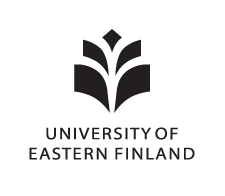| dc.contributor.author | Bengtsson, Fia,Uppsala University | |
| dc.contributor.author | Rydin, Håkan,Uppsala University | |
| dc.contributor.author | Baltzer, Jennifer,Wilfrid Laurier University | |
| dc.contributor.author | Bragazza, Luca,University of Ferrara | |
| dc.contributor.author | Bu, Zhao-Jun,Northeast Normal University | |
| dc.contributor.author | Caporn, Simon,Manchester Metropolitan University | |
| dc.contributor.author | Dorrepaal, Ellen,Umeå University | |
| dc.contributor.author | Flatberg, Kjell Ivar,Norwegian University of Science and Technology | |
| dc.contributor.author | Galanina, Olga,St. Petersburg State University* | |
| dc.contributor.author | Gałka, Mariusz,University of Lodz* | |
| dc.contributor.author | Ganeva, Anna,Bulgarian Academy of Sciences | |
| dc.contributor.author | Goia, Irina,Babeș-Bolyai University | |
| dc.contributor.author | Goncharova, Nadezhda,Russian Academy of Science* | |
| dc.contributor.author | Hajek, Michal,Masaryk University | |
| dc.contributor.author | Haraguchi, Akira,University of Kitakyushu* | |
| dc.contributor.author | Harris, Lorna,McGill University | |
| dc.contributor.author | Humphreys, Elyn,Carleton University | |
| dc.contributor.author | Jiroušek, Martin,Masaryk University | |
| dc.contributor.author | Kajukało, Katarzyna,Adam Mickiewicz University in Poznań | |
| dc.contributor.author | Karofeld, Edgar,University of Tartu | |
| dc.contributor.author | Koronatova, Natalia,Siberian Branch of the Russian Academy of Sciences | |
| dc.contributor.author | Kosykh, Natalia,Siberian Branch of the Russian Academy of Sciences | |
| dc.contributor.author | Laine, Anna,University of Eastern Finland | |
| dc.contributor.author | Lamentowicz, Mariusz,Adam Mickiewicz University * | |
| dc.contributor.author | Lapshina, Elena,Yugra State University* | |
| dc.contributor.author | Limpens, Juul,Wageningen University* | |
| dc.contributor.author | Linkosalmi, Maiju,Finnish Meteorological Institute | |
| dc.contributor.author | Ma, Jinze,Northeast Normal University | |
| dc.contributor.author | Mauritz, Marguerite,Northern Arizona University | |
| dc.contributor.author | Mitchell, Edward,University of Neuchâtel | |
| dc.contributor.author | Munir, Tariq,University of Calgary | |
| dc.contributor.author | Natali, Susan,Woods Hole Research Center | |
| dc.contributor.author | Natcheva, Rayna,Bulgarian Academy of Sciences | |
| dc.contributor.author | Philippov, Dmitriy,Russian Academy of Sciences | |
| dc.contributor.author | Rice, Steven,Union College | |
| dc.contributor.author | Robinson, Sean,SUNY Oneonta | |
| dc.contributor.author | Robroek, Bjorn,Radboud University* | |
| dc.contributor.author | Rochefort, Line,Laval University* | |
| dc.contributor.author | Singer, David,University of Neuchâtel | |
| dc.contributor.author | Stenøien, Hans,Norwegian University of Science and Technology | |
| dc.contributor.author | Tuittila, Eeva-Stiina,University of Eastern Finland | |
| dc.contributor.author | Vellak, Kai,University of Tartu | |
| dc.contributor.author | Waddington, (James) Mike,McMaster University | |
| dc.contributor.author | Granath, Gustaf,Uppsala University | |
| dc.contributor.author | Payne, Richard J.,Environment and Geography, University of York* | |
| dc.date.accessioned | 2020-08-27T02:05:19Z | |
| dc.date.available | 2020-08-27T02:05:19Z | |
| dc.date.issued | 2020-08-26T06:13:29.124784+00:00 | |
| dc.identifier.other | 10.5061/dryad.1ns1rn8rm | en |
| dc.identifier.uri | https://erepo.uef.fi/handle/123456789/8276 | |
| dc.description.abstract | The relative importance of global versus local environmental factors for growth and thus carbon uptake of the bryophyte genus Sphagnum – the main peat-former and ecosystem engineer in northern peatlands – remains unclear. 2) We measured length growth and net primary production (NPP) of two abundant Sphagnum species across 99 Holarctic peatlands. We tested the importance of previously proposed abiotic and biotic drivers for peatland carbon uptake (climate, N deposition, water table depth, and vascular plant cover) on these two responses. Employing structural equation models, we explored both indirect and direct effects of drivers on Sphagnum growth. 3) Variation in growth was large, but similar within and between peatlands. Length growth showed a stronger response to predictors than NPP. Moreover, the smaller and denser Sphagnum fuscum growing on hummocks had weaker responses to climatic variation than the larger and looser S. magellanicum growing in the wetter conditions. Growth decreased with increasing vascular plant cover within a site. Between sites, precipitation and temperature increased growth for S. magellanicum. The structural equation models indicated that indirect effects are important. For example, vascular plant cover increased with a deeper water table, increased nitrogen deposition, precipitation and temperature. These factors also influenced Sphagnum growth indirectly by affecting moss shoot density. 4) Synthesis Our results imply that in a warmer climate, S. magellanicum will increase length growth as long as precipitation is not reduced, while S. fuscum is more resistant to decreased precipitation, but also less able to take advantage of increased precipitation and temperature. Such species-specific sensitivity to climate may affect competitive outcomes in a changing environment, and potentially the future carbon sink function of peatlands. | |
| dc.relation.uri | https://zenodo.org/record/4001413 | |
| dc.subject | Net primary production | |
| dc.subject | peatlands | |
| dc.subject | peat mosses | |
| dc.subject | Net primary production | |
| dc.subject | peatlands | |
| dc.subject | peat mosses | |
| dc.title | Environmental drivers of Sphagnum growth in peatlands across the Holarctic region | |
| dc.relation.doi | 10.5061/dryad.1ns1rn8rm | |

